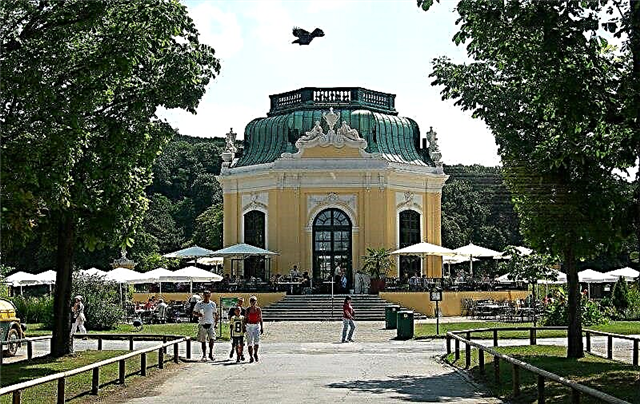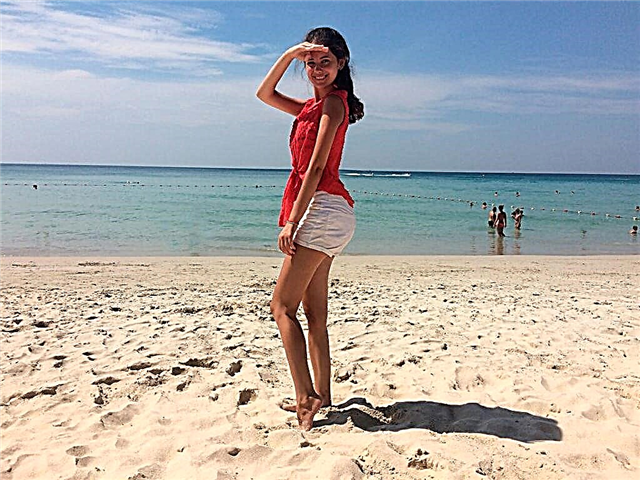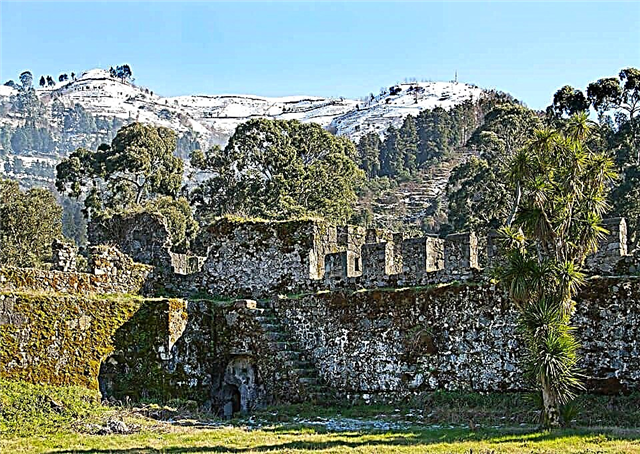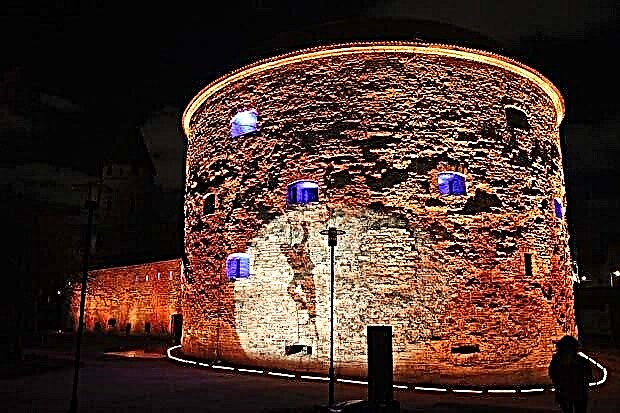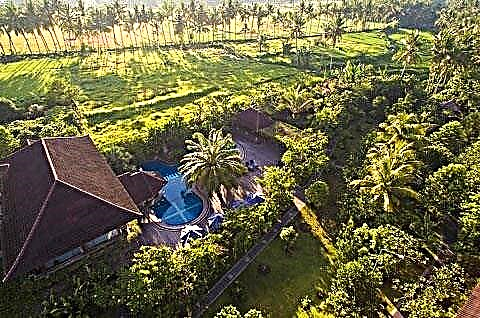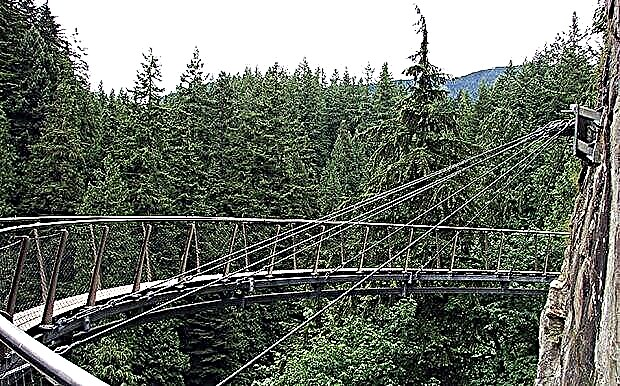The capital of Tatarstan is a large multicultural city. For more than 1000 years of history, residents of Kazan have developed a tolerant attitude towards different religions. On the streets and in Kazan Kremlin Muslim mosques stand next to Orthodox churches and do not interfere with each other at all. A wonderful example of mutual respect and acceptance of other people's traditions!
Blagoveshchensky cathedral
Article: Annunciation Cathedral - noble simplicity of lines and shapes

View of the Annunciation Cathedral from the observation deck of the Kazan Kremlin
The majestic church in the Kazan Kremlin is a wonderful example of Pskov architecture and one of the oldest Orthodox cathedrals in the city. The cross-domed church was founded in the time of John IV the Terrible. It was rebuilt and rebuilt many times after the fires.
For several centuries, the Annunciation Cathedral has played the role of the spiritual center of the Volga region. Russian emperors, famous writers and composers have visited the vaults of the church. The famous Russian bass Fyodor Chaliapin sang in the choir of the temple. Today, tourists come to the cathedral to see the colorful frescoes and the old necropolis, where 17 metropolitans and archbishops are buried.
Kul Sharif Mosque
Article: Kul-Sharif Mosque - Muslim shrine of the Kazan Kremlin

View of the Kul Sharif mosque
The new temple was built in memory of the mosque that adorned the city in the Middle Ages, but was destroyed by the troops of Ivan IV the Terrible. For about four and a half centuries, only folk legends and a few documents reminded of the lost temple, but in 2005 the legendary Kul Sharif became a reality.
The Muslim shrine stands on the territory of the Kazan Kremlin. The five-story granite and marble building has a massive base, a large central dome and six tall minarets. The white stone shines brightly in the sun, and at sunset the walls of the mosque acquire a delicate pink color.
Temple of all religions
Article: The Temple of All Religions is the most unusual architectural landmark of Tatarstan

View of the Temple of All Religions, the Ecumenical Temple, the International Cultural Center for Spiritual Unity
The most unusual sight of Kazan is the temple, which is very similar to a fairytale multi-colored castle. The original architectural structure was built according to the project of Eldar Mansaveevich Khanov in the village of Staroe Arakchino, not far from the western outskirts of the city. The modern church unites 16 religions that are professed in different parts of the world.
The ecumenical temple in Kazan is such a large-scale and costly architectural project that it continues to be erected to this day. The open space houses an art school, a concert hall and an art gallery. Guests can visit the Catholic and Egyptian Halls, look into the Tea Room and the Hall of Jesus Christ, take part in interesting master classes and listen to music.
Epiphany Cathedral
Article: Epiphany Cathedral - the spiritual homeland of Chaliapin

View of the Epiphany Cathedral against the background of the bell tower
The sky-blue temple in the Russian Baroque style fits perfectly into the city's buildings and is considered a real gem of Kazan. Tourists come to see the gilded domes, blue facade decoration and the free-standing bell tower, which rises to 74 m. For a long time, the monumental red brick tower was the tallest building in the city.
The majestic bell tower and the picturesque Epiphany Cathedral are included in the list of cultural heritage sites of Russia. The famous Russian singer Fyodor Ivanovich Chaliapin was baptized in this church. Today, the Orthodox shrine is a functioning church, and church services are regularly held here.
Church of Paraskeva Friday
Article: Church of the Holy Great Martyr Paraskeva Pyatnitsa - a white miracle on the banks of the Kazanka

General view of the Church of the Holy Great Martyr Paraskeva Pyatnitsa
A beautiful white church with azure domes is one of the most famous cathedrals and temples in Kazan. Its history begins in the middle of the 16th century, when the first wooden church was built. The current stone church appeared in the 1720s. It was built with the money of a wealthy merchant and industrialist Ivan Afanasyevich Mikhlyaev. The church burned several times during severe fires, but then it was completely restored.
The beautiful temple of Paraskeva Pyatnitsa is made in the traditions of the Russian Baroque - an octagon on a quadrangle and has a height of 22 m. The church on Bolshaya Krasnaya Street went through difficult trials during the years of the Soviet regime's struggle with religion. At the end of the last century, it was completely restored and opened to believers.
Al-Marjani Mosque
Article: Al-Marjani Mosque - a symbol of religious tolerance

View of the al-Marjani mosque
Many historians call the reign of Catherine II an era of religious tolerance in the country. In the 1770s, 62 Kazan merchants collected a huge amount of money - 5,000 rubles and built the first mosque in the city since the time of Ivan IV the Terrible. It is noteworthy that the building permit was given by the Russian empress herself!
The ancient Muslim temple harmoniously combines the traditions of strict medieval architecture, graceful "Petersburg" baroque and Tatar decorative ornament. During the years of Soviet power, the al-Marjani mosque in the Old Tatar settlement remained the only functioning Muslim temple in the city. Here is kept a revered by Muslims shrine - the gravestone of Muhammad-gali bey.
Peter and Paul Cathedral
Article: Peter and Paul Cathedral - one of the spiritual symbols of Kazan

View of the Peter and Paul Cathedral
The most valuable architectural monument and one of the spiritual symbols of the city rises on the street of the Tatar writer Musa Jalil. The Orthodox church was built on an elevated site, so it can be clearly seen from different parts of Kazan. The church is made in the tradition of the magnificent "Naryshkin" baroque, and pleases the eye with a unique bright decoration.
All the guests of Kazan - emperors and tsarist officials - admired the Peter and Paul Cathedral. Alexander Pushkin and Alexander Dumas wrote about the Orthodox pearl. Fyodor Chaliapin himself sang in the choir of the Kazan temple. Inside you can see old icons and a richly decorated seven-tiered iconostasis, made in the 20s of the 18th century. Tourists admire the interiors, and believers come to venerate the relics of Metropolitan Ephraim of Kazan, who in 1613 crowned Mikhail Romanov as king.
Azimov Mosque
Article: Azimov Mosque - eclecticism with national motives

View of the Azimov Mosque
Many consider the Azimov Mosque to be the most beautiful architectural monument of the Tatar capital. Once in the Old Tatar settlement there was a small Muslim temple made of wood, where workers from a soap factory used to go to pray. In 1851, the respected Kazan merchant Mustafa Azimov built a wooden mosque here, and 26 years later his heir, Murtaza Azimov, rebuilt the building in stone.
The old mosque was lucky - it was not destroyed during the years of the anti-religious campaign. The carved treasure of Kazan pleases pilgrims and tourists with soft green facades, beautiful interior decoration, pointed arches and multi-colored stained glass windows. A distinctive feature of the Azimov Mosque is a slender three-tiered minaret, which resembles the tall minarets of Constantinople. It rises 51 m. Unfortunately, the wooden staircase inside the building is badly dilapidated, so visitors are not allowed to enter the minaret.
Nurulla Mosque
Article: Nurulla Mosque - a memory in the Senny market

View of the Nurullah Mosque
The Sennaya or Seventh Cathedral Mosque appeared in Kazan in the middle of the 19th century. Like many religious buildings in the city, it was built with the money of Kazan merchants and industrialists.The relatives of the brothers Ibrahim and Iskhak Yunusovs became the teachers of the Nurulla mosque, who invested the money of their father, Gubaidulla Yunusov, in the construction of a two-story white-stone building.
The name of the mosque is translated from Arabic as "the light of Allah". The Muslim temple is decorated in the best traditions of the Middle East and Volga Bulgaria. The middle of the architectural complex is occupied by a polygonal central prayer hall, which has a green dome and intricate stained-glass windows. The high minaret is crowned with a peaked roof. Thanks to the pointed arch at the entrance, it looks like a bastion of a medieval castle.
The Closed Mosque
Article: The Closed Mosque - the memory of the Volga Bulgaria

View of the Closed Mosque
On the eastern shore of Lake Kaban, Kazan, there is a mosque dedicated to the 1000th anniversary of the adoption of Islam by the Tatars. From historical documents it is known that the ruler of the Volga Bulgaria - the powerful Khan Almush in 922 made the Islamic faith the main religion of his state. Preparing for an important date, in 1914, a new Jubilee Mosque began to be built in Kazan using public money.
Since ancient times, the Kaban and the Bulak channel have divided the city's territory in two. The Tatar community lived from the west, and Orthodox townspeople settled to the east. The two-story Zakabannaya Mosque was built on the Christian part of Kazan according to an architectural project designed by Evgeny Pechnikov. The building has two separate halls where women and men can pray. The three levels of the minaret became a symbol of three periods in the history of the Tatars and Bulgars - before the adoption of Islam, medieval and modern.

